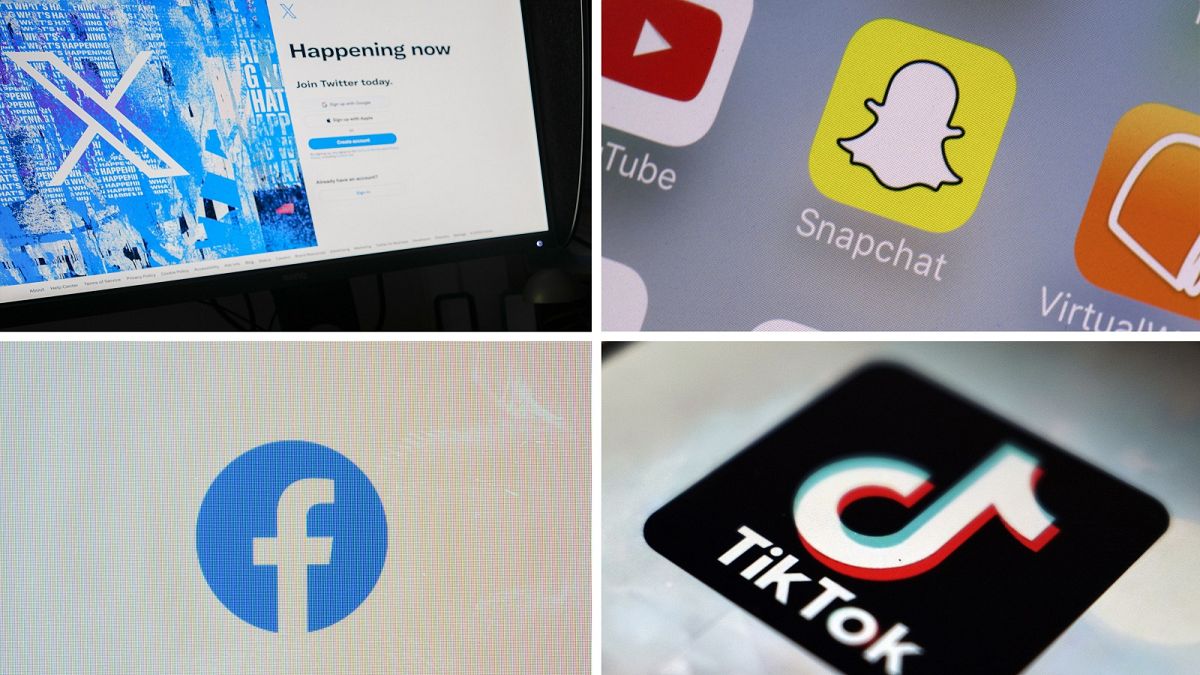Social media companies generate billions of dollars in ad revenue from US minors, a new study shows. In Europe, a new law bans targeted advertising towards youth.
Social media companies such as Instagram and TikTok made over $11 billion (€9.9 billion) in US advertising revenue from minors last year, according to a study.
The research led by the Harvard T.H. Chan School of Public Health is the first to estimate the annual ad revenue attributable to young users of these platforms.
“As concerns about youth mental health grow, more and more policymakers are trying to introduce legislation to curtail social media platform practices that may drive depression, anxiety, and disordered eating in young people,” said Bryn Austin, a professor of social and behavioural sciences at Harvard and senior author of the study.
“Although social media platforms may claim that they can self-regulate their practices to reduce the harms to young people, they have yet to do so, and our study suggests they have overwhelming financial incentives to continue to delay taking meaningful steps to protect children,” she added.
The researchers looked into the number of users under 18 years of age on Facebook, Instagram, Snapchat, TikTok, X (formerly Twitter) and YouTube in 2022, which was based on population data from the US Census and survey data from Common Sense Media and Pew Research.
They then used data from research firm eMarketer, now called Insider Intelligence, and Qustodio, a parental control app, to estimate each platform’s US ad revenue in 2022 and the time children spent per day on each platform.
A simulation model was built using the data to estimate how much ad revenue the platforms earned from minors in the US.
Negative impact of social media
Researchers and lawmakers have long focused on the negative effects stemming from social media platforms, whose personally tailored algorithms can drive children towards excessive use.
This year, lawmakers in states like New York and Utah introduced or passed legislation that would curb social media use among kids, citing harm to youth mental health and other concerns.
Meta, which owns Instagram and Facebook, is also being sued by dozens of states for allegedly contributing to the mental health crisis.
The platforms do not make public how much money they earn from minors.
In a 2020 policy paper, the American Academy of Pediatrics said children are “uniquely vulnerable to the persuasive effects of advertising because of immature critical thinking skills and impulse inhibition.”
“School-aged children and teenagers may be able to recognise advertising but often are not able to resist it when it is embedded within trusted social networks, encouraged by celebrity influencers, or delivered next to personalised content,” the paper noted.
The EU’s Digital Services Act (DSA), meanwhile, includes a ban on targeted advertisement to minors on online platforms.
According to the Harvard study, YouTube derived the greatest ad revenue from users 12 and under (€866.8 million), followed by Instagram (€724 million) and Facebook (€123.9 million).
Instagram, meanwhile, derived the greatest ad revenue from users aged 13-17 (€3.6 billion), followed by TikTok (€1.8 billion) and YouTube (€1.08 billion).
The researchers also estimate that Snapchat derived the greatest share of its overall 2022 ad revenue from users under 18 (41 per cent), followed by TikTok (35 per cent), YouTube (27 per cent), and Instagram (16 per cent).







